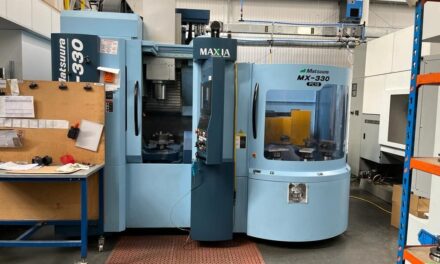While the term Industry 4.0 was firstly coined in 2011, few companies have effectively implemented such technologies. However, as turbulent circumstances such as the COVID-19 pandemic accelerate the need for digitalisation, should manufacturers sprint to invest in new automation tools? And if so, which ones? Here Neil Bellinger, head of EMEA at automation parts supplier EU Automation, answers these questions considering the latest automation trends.
A recent study by McKinsey reveals that businesses have vaulted five years forward in digital adoption in just eight weeks.
The costs and risk associated with early-stage technologies meant that traditionally, most manufacturers have taken a marathon-like approach to digitalisation — slow and steady. However, in an attempt to stay safe and remain efficient during the pandemic, businesses are suddenly sprinting forward, increasingly investing in automation tools that deliver fast and impactful results. So, what are the technologies that have had the most impact so far
Cloud services
The pandemic brought restrictions under various lockdown plans. These have emphasised the need to create resilient conditions for remote working and strengthened the necessity to invest in cloud solutions. While it is unclear for how long people will be forced to work from home, it is certain that cloud usage will rise.
Businesses that already have a cloud infrastructure in place, especially a multi-cloud one, are the most prepared for the effects of the pandemic. For those who don’t, cloud services can be a saving grace to allow them to serve their customers and protect their assets. Remote work increased the surface for to cyber-attacks, meaning that employees need to be more careful with their data. Cloud services can protect encrypted data, constantly monitor it and create automated backups. Nevertheless, cloud services will also be crucial in the digital-led recovery after the pandemic. The sooner companies adhere to cloud services, the more prepared they are for an uncertain future.
Digital warehouse automation
The pandemic has also generated the need to quickly respond to sudden spikes in demand, as well as be prepared for the possibility of disruptions in the supply chain. To do that, manufacturers have had to optimise their warehouses to ensure they operate as efficiently as possible. Not only are warehouses growing in size to meet market demands, they are also becoming smarter and safer.
For example, the usage of Automated Guided Vehicles (AGVs) has grown significantly. The market for AGVs was already growing at a brisk pace of 30 per cent before the pandemic and has now skyrocketed. AGVs can connect to 5G networks and are imperative for optimising warehouse operations such as picking, transport and store products without human intervention. A industry that will particularly benefit from AGVs is food and beverage, due to the crucial need for picking and grasping technology.
Automated order picking systems are also growing in popularity. Until a year ago, 90 per cent of warehouse picking was manual. Smart warehouses today require systems such as pick-to-light, voice picking or mobile collaborative robots. For small and medium-sized businesses, a hybrid solution like pick-to-light, which requires the installation of LEDs and barcode scanners on racks and shelves, might be best.
The Forth Industrial Revolution might have started as a marathon, with manufacturers worldwide joining at their own pace. However, winning the race against changing markets mean that manufacturers should now take a leap forward and digitalise for good.
At EU Automation, we understand the pressure that falls on manufacturers and business owners and we can help them keep their production up and running by providing the automation parts they need in the shortest period to avoid downtime.
To find out more about how we can help, visit www.euautomation.com.



